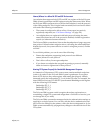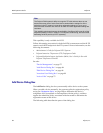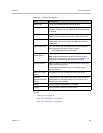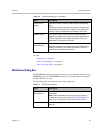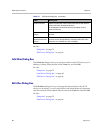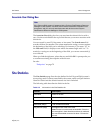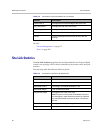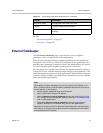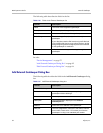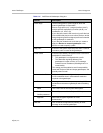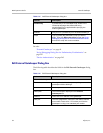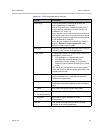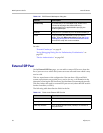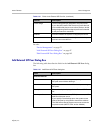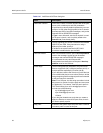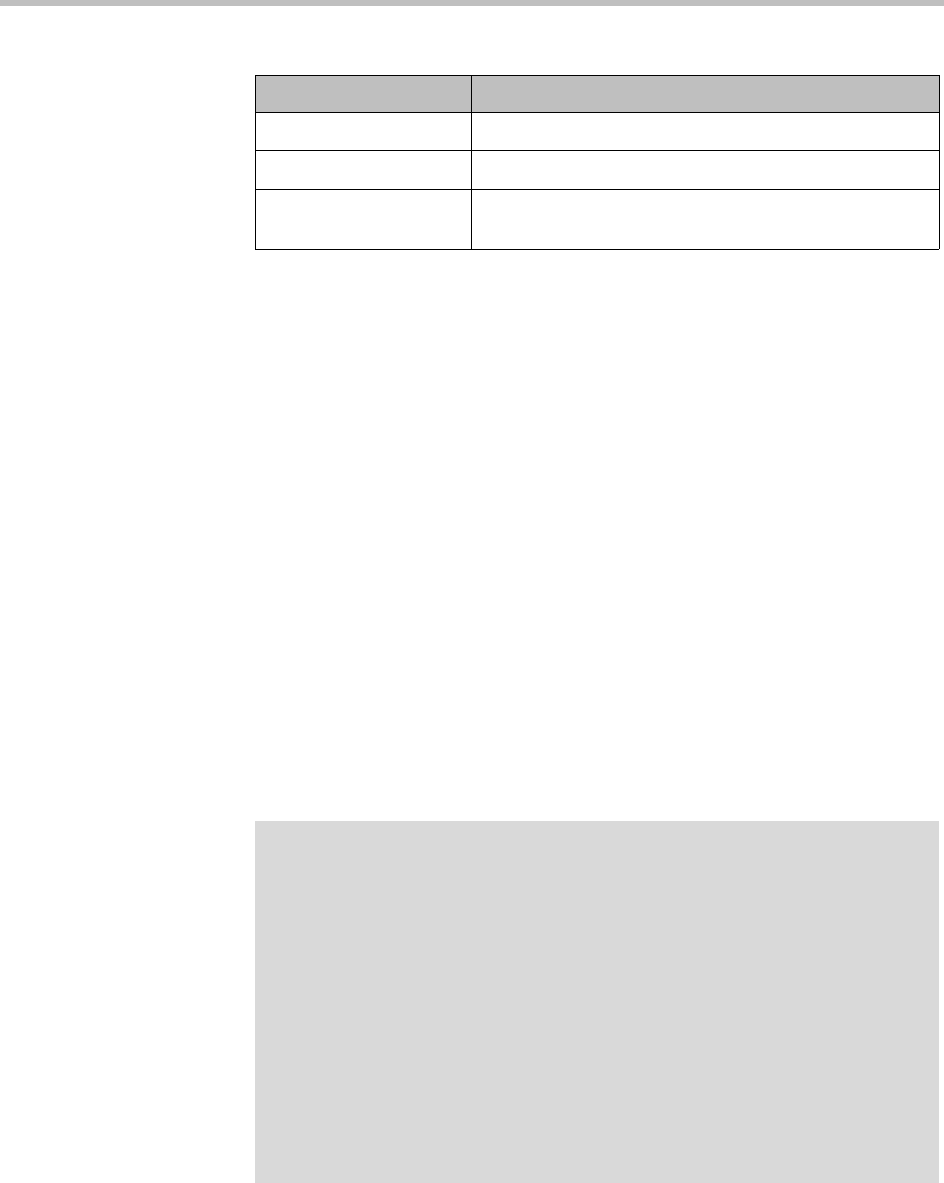
External Gatekeeper Device Management
Polycom, Inc. 91
See also:
“Device Management” on page 75
“Site Links” on page 279
External Gatekeeper
On the External Gatekeeper page, you can add or remove neighbor
gatekeepers. This is a supercluster-wide configuration.
When an enterprise has multiple neighbored gatekeepers, each gatekeeper
manages its own H.323 zone. When a call originates in one gatekeeper zone
and that zone’s gatekeeper is unable to resolve the dialed address, it forwards
the call to the appropriate neighbor gatekeeper(s) for resolution.
But note that a Polycom DMA supercluster can manage multiple locations as
a single H.323 zone, with the clusters acting as a single virtual gatekeeper. This
allows the gatekeeper function to be geographically distributed, but managed
centrally. A Polycom DMA supercluster may eliminate the need for multiple
zones and neighbor gatekeepers.
Avg Delay (msec) Average delay rate of the active calls.
Territory Territory to which the site belongs.
Cluster Cluster responsible for the territory to which the site
belongs.
Table 5-9 Information in the Site Link Statistics list (continued)
Column Description
Note
When adding a neighbor gatekeeper, you can only specify one IP address. In an
IPv4 + IPv6 environment, to add a neighbor gatekeeper that has both an IPv4 and
an IPv6 address, do the following:
• Add the neighbor gatekeeper using its IPv4 address.
• Add it a second time using its IPv6 address.
• Add one Resolve to external gatekeeper dial rule (see “Add Dial Rule Dialog
Box” on page 232) that specifies the neighbor gatekeeper’s IPv4 address entry
(and no other gatekeepers).
• Add another Resolve to external gatekeeper dial rule that specifies the
neighbor gatekeeper’s IPv6 address entry (and no other gatekeepers).
Requests from endpoints with IPv4 addresses will be forwarded to the gatekeeper’s
IPv4 address, and requests from endpoints with IPv6 addresses will be forwarded
to the gatekeeper’s IPv6 address.



